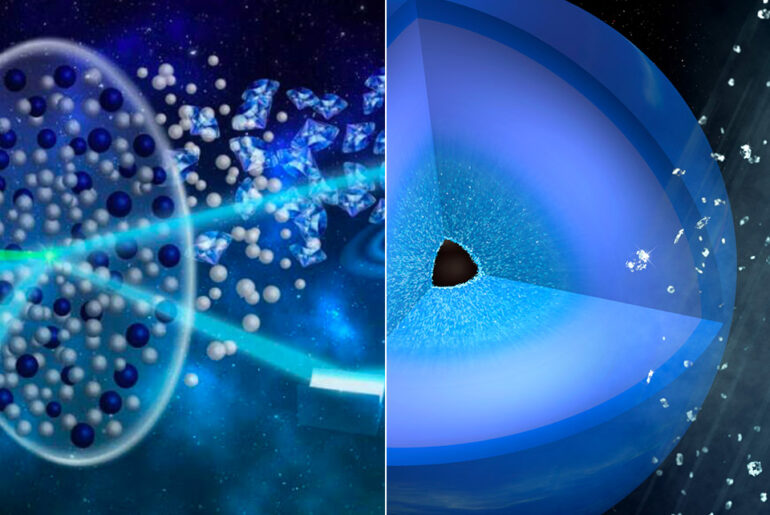
Scientists, such as Dr Paul Sutter, believe that beneath the surface layers of two ice giants – Uranus and Neptune – there may be a constant rain of diamonds. These two planets mainly consist of water, ammonia and methane, which were all in solid form when they were primarily incorporated into the planets during their formation. They have rocky cores surrounded by elements that are probably compressed into exotic quantum states.
When these bizarre quantum states transition into a super-pressurized “soup” as some would call it, they generally thin out the closer you get to the surface. After studying this data, scientists used a combination of mathematical modelling and laboratory experiments to conclude that Uranus and Neptune most likely have the spectaculr “diamond rain.”
- LEGO NASA Space Set - This adult LEGO set features the Space Shuttle Discovery and the Hubble Space Telescope from NASA’s 1990 STS-31 mission,...
- Solar System Exploration - Unlock the mysteries of our solar system with this engaging 2,354-piece project, packed with authentic details and...
- Shuttle Features Galore - The space shuttle model has an opening payload bay, retractable landing gear, opening cockpit, moving elevons, space arm,...
This research provides data on a phenomenon that is very difficult to model computationally: the ‘miscibility’ of two elements, or how they combine when mixed. Here they see how two elements separate, like getting mayonnaise to separate back into oil and vinegar. It’s a new way to study the evolutionary history of planets and planetary systems, as well as supporting experiments towards potential future forms of energy from fusion,” said Mike Dunne, Linac Coherent Light Source (LCLS) Director.




